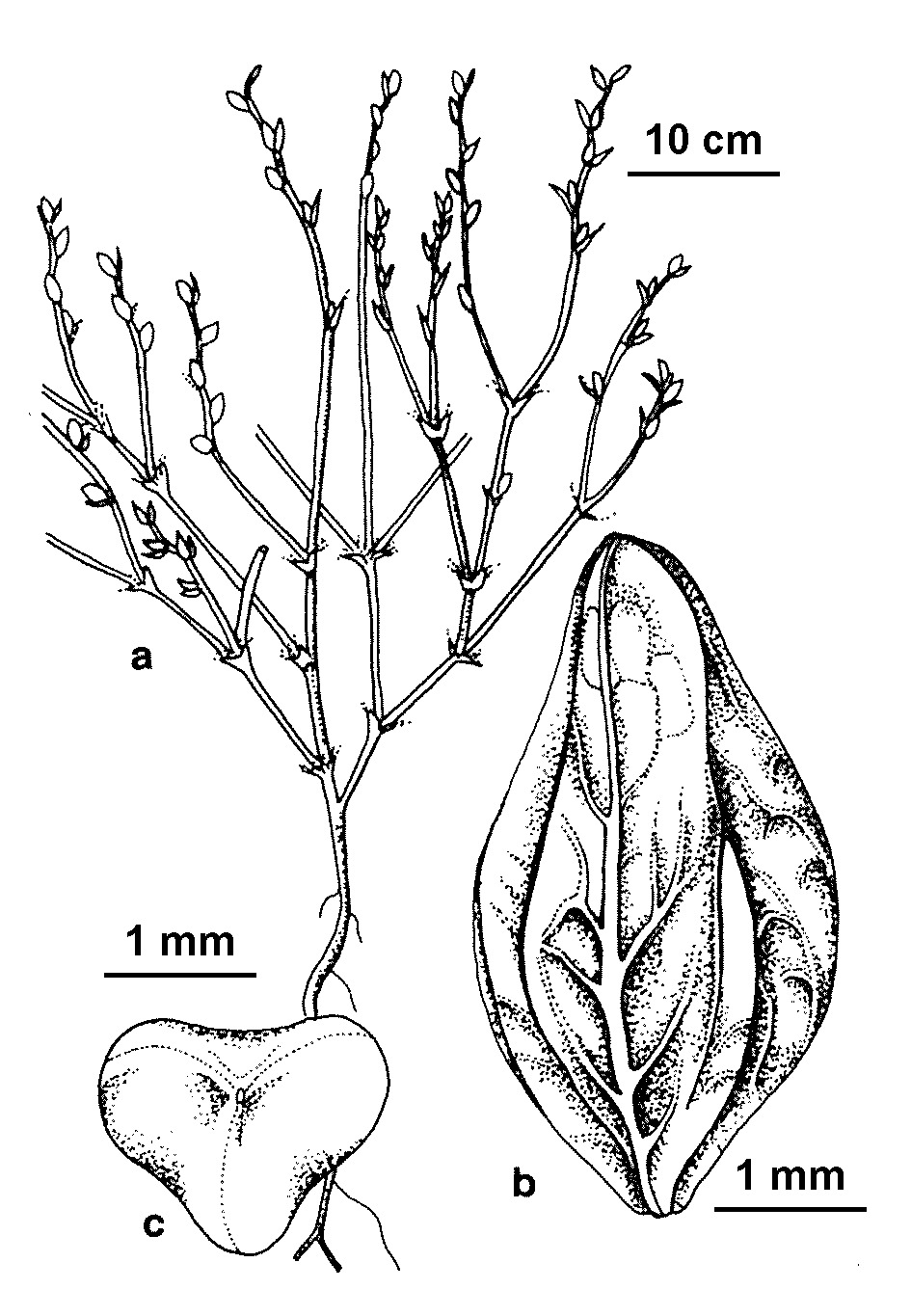Polygonum bellardii
All. Tree HogweedErect, usually much-branched annual, to c. 1 m high. Ochreas 4–12 mm long, soon disintegrating. Lower leaves lanceolate to oblong, 12–45 mm long, 2–5 mm wide, soon deciduous, margins flat, lateral veins not obvious; leaves in flowering part much reduced and bract-like. Flowers 1–3 in axillary clusters; perianth c. 3 mm long, the segments shortly united at base, the outer 3 segments green with white or pink margins, the inner 2 largely white or pink. Fruiting perianth slightly enlarged, to c. 4.5 mm long, the segments becoming more or less prominently reticulate-veined. Nut with 3 more or less equal concave faces, c. 3 mm long, shining brown. Flowers Nov.–Feb.
LoM, MuM, Wim, VVP, VRiv, GipP. Also naturalised WA, SA, Qld. Native of western and southern Europe. A troublesome weed of cereal crops on fertile loam soils in the Warracknabeal-Charlton area, occasionally also in grain-handling areas and on roadsides in grain-growing areas.
Walsh, N.G. (1996). Polygonaceae. In: Walsh, N.G.; Entwisle, T.J., Flora of Victoria Vol. 3, Dicotyledons Winteraceae to Myrtaceae, pp. 272–295. Inkata Press, Melbourne.
 Spinning
Spinning


